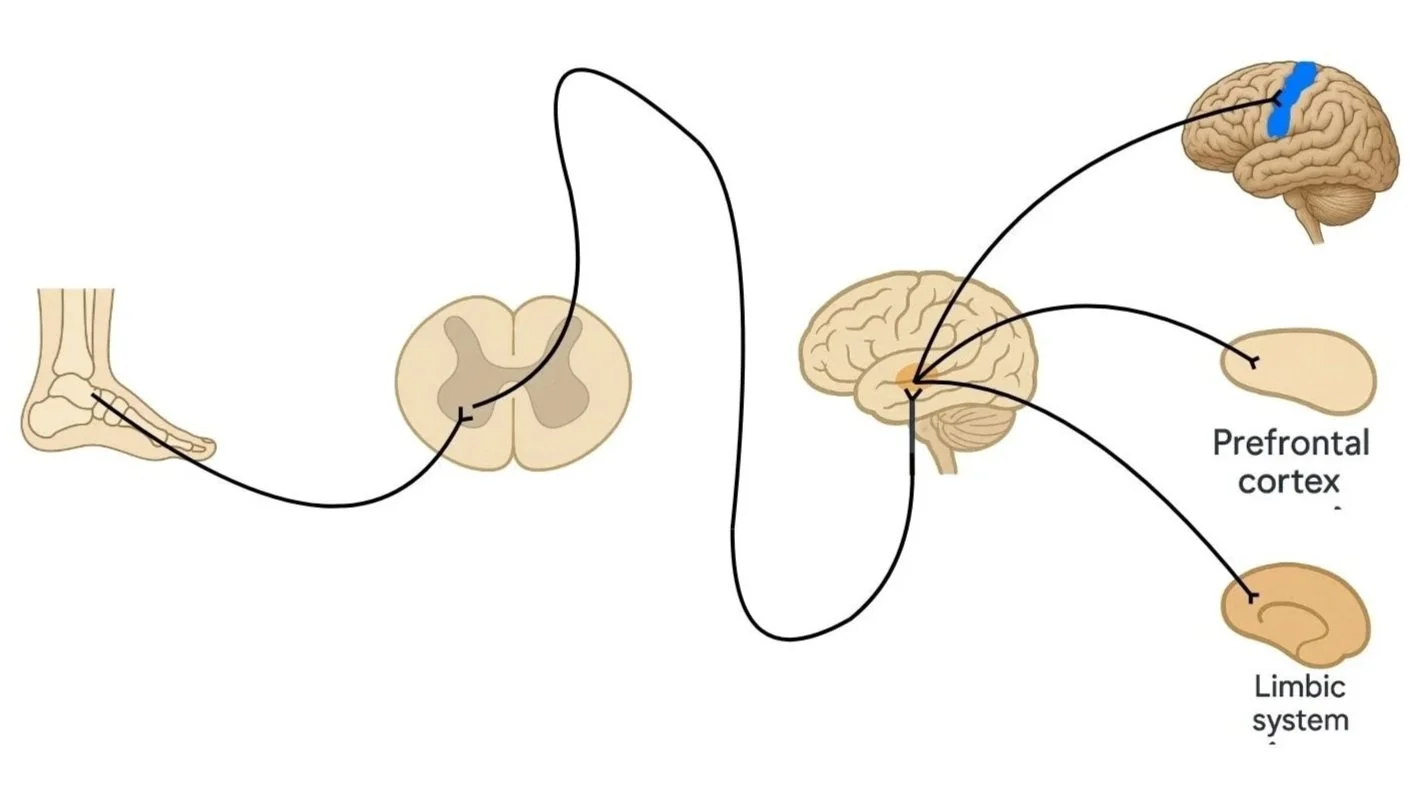If you've ever experienced pain severe enough to warrant an MRI, you likely hoped for answers. An MRI scan is often seen as the final word—a definitive way to diagnose what’s causing your discomfort. So, when the results come back completely clear, it can be incredibly invalidating. After all, you’re still feeling the pain, but the scan says everything is "normal." This situation leaves many people confused, frustrated, and uncertain about what to do next. But this is actually a more common experience than you might think, and it points to a deeper, more complex interaction between your body and your nervous system
Let’s explore why your pain might persist despite a clean MRI and what you can do about it.
1. Understanding the Disconnect: A Small Pebble, a Big Splash
Imagine dropping a small pebble into a still pond and watching the ripples spread out. Even though the pebble is small, it can create a big impact. This is a useful analogy for understanding how our nervous system can sometimes amplify pain signals. The issue may be minor—like a small tweak in a muscle or slight irritation in a joint—but the nervous system amplifies this signal, making it feel like something more severe.
Even though an MRI might not pick up any major structural issues, the pain is real. What’s happening is that your body’s alarm system (your nervous system) is in a heightened state of alert, sending amplified pain signals in response to what might be a minor or even non-existent issue.
This doesn't mean the pain is "in your head" or that it's not legitimate. It just means that the nervous system is playing a bigger role in your pain than any structural damage.
2. Beliefs About Pain: How They Shape Your Experience
Pain is not just a physical experience; it's also shaped by your beliefs and perceptions. If you’re dealing with chronic pain, what you think about your pain can magnify or diminish its intensity. Let’s say you’ve been in pain for months, and you believe that the pain means something is seriously wrong with your body. You might think that continuing to move or exercise will cause further damage. These thoughts can heighten the body’s pain response.
In fact, research shows that the beliefs we hold about pain can actually alter our experience of it. If you believe your pain is a sign of serious damage, you’re more likely to experience higher levels of pain. This is partly because fear and anxiety activate the nervous system, amplifying the signals of discomfort your brain is interpreting.
So when an MRI comes back clear, it challenges those beliefs. If there's no significant damage, then the pain might not be a sign of impending harm. Reframing how you think about the pain can be an important step toward reducing its intensity.
3. Navigating the Emotional Side of a "Clear" MRI
When your MRI comes back clear, it’s natural to feel invalidated. After all, if nothing is wrong, why do you feel so much pain? This can lead to frustration, confusion, and sometimes even a sense of helplessness.
But it’s essential to remember that pain is complex. While MRIs are excellent at identifying structural issues like herniated discs or torn ligaments, they don’t capture the whole picture. Pain is influenced by many factors, including:
Nervous system sensitivity
Emotional and psychological stress
Previous injuries and how the body compensates for them
Beliefs and fears about the pain itself
4. Where Do You Go from Here?
If your MRI is clear but you’re still experiencing significant pain, don’t lose hope. There are several steps you can take to address the situation:
Understand the role of the nervous system: Recognizing that your nervous system may be amplifying pain signals can change how you approach your recovery. Calming the nervous system through techniques like breathing exercises, mindfulness, and graded movement can help reduce pain over time.
Challenge your beliefs about pain: Work with a healthcare provider or therapist to reframe your thinking about pain. Cognitive Behavioral Therapy (CBT) and pain education can help you reshape negative thoughts and beliefs that may be contributing to your pain.
Focus on function over pain: Instead of centering your recovery around getting rid of pain entirely, shift your focus to improving your function. Gradual, guided movement can help desensitize the nervous system and rebuild strength without exacerbating your pain.
If you've had an MRI that comes back clear, it's important to remember that this doesn't invalidate your pain. Pain is complex, and many factors—especially your nervous system—play a significant role in how you experience it. By understanding the relationship between pain, the nervous system, and your beliefs, you can begin to manage and reduce your pain effectively. Working with healthcare professionals to develop a treatment plan that addresses these factors can help you move forward, even when the scan doesn’t show an obvious cause.
Need help? leave us your details to receive a free call from one of our health professionals


